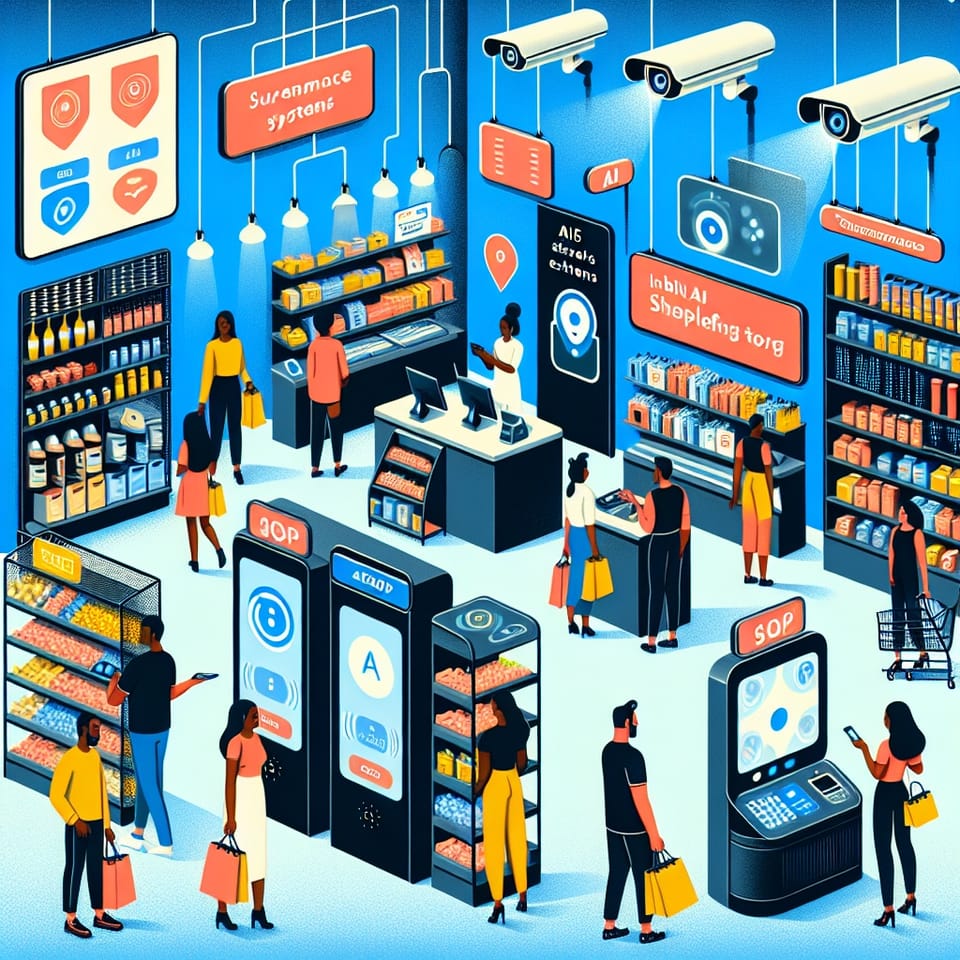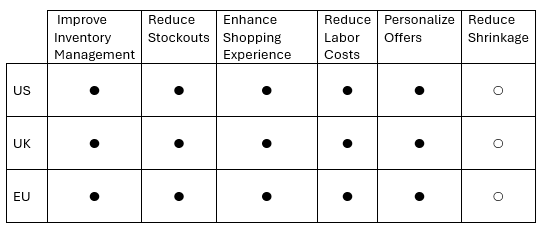Visual AI market zooms past USD 9.9 Billion

The size of AI in the Computer Vision market was valued at USD 9.9 billion in 2023 and it is expected to clock 10% CAGR from 2024 to 2032. By 2032, the market size of visual AI is expected to touch USD 28 billion. One of the key drivers for the surge in demand for AI systems is attributed to increasing digitalization in the retail industry.
Typical usage of Visual AI in retail
As can be seen in the following illustration, across markets worldwide, visual AI usage in the retail sector is quite widespread. While most of these deployments focus on inventory management, customer relationship management, and cost savings, quite a few newer challenges demand innovative solutions to be built to serve retail companies across the globe.

Security is a top concern for retail stores
Security is emerging as a primary concern for most retail stores, which are witnessing increasing rates of shoplifting and rising shrinkage running into USD billions. Although retail companies today employ in-house loss prevention officers, their ability to detect and prevent theft across a network of stores will depend largely on the efficacy of visual AI solutions deployed in their stores.
In addition to financial exposure from theft, retail companies are also grappling with challenges concerning the safety of their store staff. With rising theft, the retail stores are also witnessing a steady increase in incidents of violence.
Theft prevention: Success factors for Visual AI
Machine Learning algorithms, deep learning algorithms, pretrained models with behaviors of current customers and bad actors are a few of the essential parts that go into the making of a Visual AI program. Compatibility of the visual AI system with the infrastructure in the stores, the positioning of surveillance hardware such as CCTV, and training of store staff about how the technology can be used to handle different scenarios.
What prevents a largescale rollout of AI systems in retail
Retail companies have already invested heavily in their existing technology infrastructure, and they are averse to adopting new technologies that may put pressure on them to make additional investments. Most retail companies view AI systems as expensive hardware that requires large amounts of RAM, GPU, processing power, and expert personnel with specialized skills to derive meaningful results.
Compliance challenges such as privacy concerns and highly restrictive policies around facial recognition are key reasons for a slower adoption of visual AI.
Recent Visual AI trends in the UK retail sector
Lately, 3 of the top 5 retail companies in the UK started deploying visual AI to check shrinkage. Iceland and Co-op have taken the lead in deploying visual AI to prevent shoplifting and reduce shrinkage by monitoring the aisles. Sainsbury’s on the other hand have started by deploying visual AI on the self-checkouts before exploring other opportunities to reduce shrinkage.
Shrinkage prevention will drive the next wave of visual AI deployments. Quite a few solutions are vying to capture this market by addressing the fast-growing need. The next wave of substantial visual AI deployments will be focused on preventing retail theft.
While there are quite a few contenders vying for attention, the winner will necessarily need to address the retailers’ needs of solutions which can work with their existing technical infrastructure, and which can provide the best ROI without involving substantial hardware spends.
About SAI
As a leader in computer vision technology, SAI Group delivers cutting-edge, multi-modal AI solutions into retail environments. Using a unique platform approach, its technology uses existing camera systems to target losses, increase store safety, and underpin operational efficiencies.
All solutions are built from the ground up to ensure the highest levels of security and data protection, respecting the privacy expectations of the public and operating to stringent ethical standards while delivering substantial value to our clients. Globally, SAI monitors millions of transactions per day, protecting the revenues from tens of millions of product sales and hundreds of millions of customer interactions. Its models also accurately identify anti-social behavior, aggression and violence, helping to de-escalate situations with real-time interfaces to security officers and operations centers.
